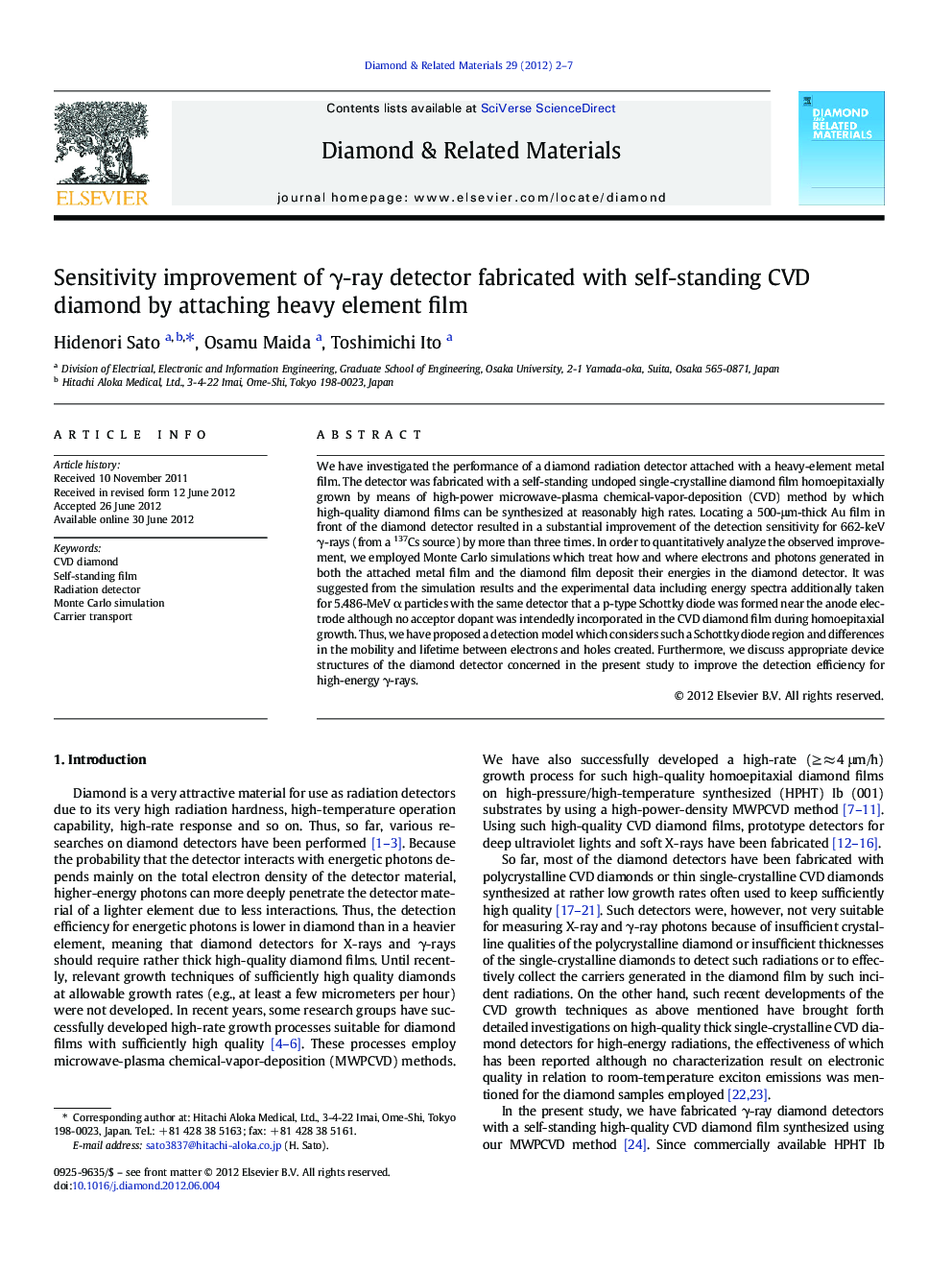| Article ID | Journal | Published Year | Pages | File Type |
|---|---|---|---|---|
| 702544 | Diamond and Related Materials | 2012 | 6 Pages |
We have investigated the performance of a diamond radiation detector attached with a heavy-element metal film. The detector was fabricated with a self-standing undoped single-crystalline diamond film homoepitaxially grown by means of high-power microwave-plasma chemical-vapor-deposition (CVD) method by which high-quality diamond films can be synthesized at reasonably high rates. Locating a 500-μm-thick Au film in front of the diamond detector resulted in a substantial improvement of the detection sensitivity for 662-keV γ-rays (from a 137Cs source) by more than three times. In order to quantitatively analyze the observed improvement, we employed Monte Carlo simulations which treat how and where electrons and photons generated in both the attached metal film and the diamond film deposit their energies in the diamond detector. It was suggested from the simulation results and the experimental data including energy spectra additionally taken for 5.486-MeV α particles with the same detector that a p-type Schottky diode was formed near the anode electrode although no acceptor dopant was intendedly incorporated in the CVD diamond film during homoepitaxial growth. Thus, we have proposed a detection model which considers such a Schottky diode region and differences in the mobility and lifetime between electrons and holes created. Furthermore, we discuss appropriate device structures of the diamond detector concerned in the present study to improve the detection efficiency for high-energy γ-rays.
Graphical abstractFigure optionsDownload full-size imageDownload as PowerPoint slideHighlights► The sensitivity of the diamond detector attached with a metal film can be improved. ► We proposed the presence of the Schottky barrier at the fabricated diamond detector. ► The transport behaviors of the created carriers can be estimated under the assumptions. ► The carriers created near the positively-biased electrode mainly contribute to the detection.
